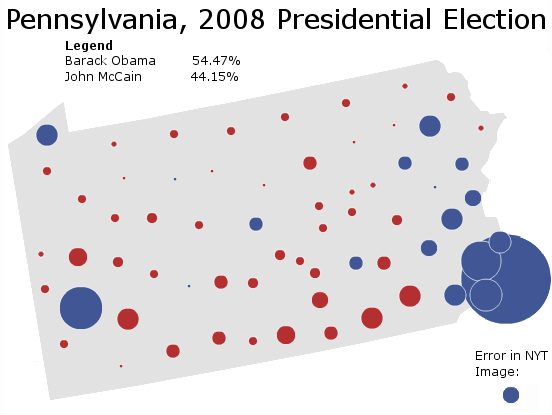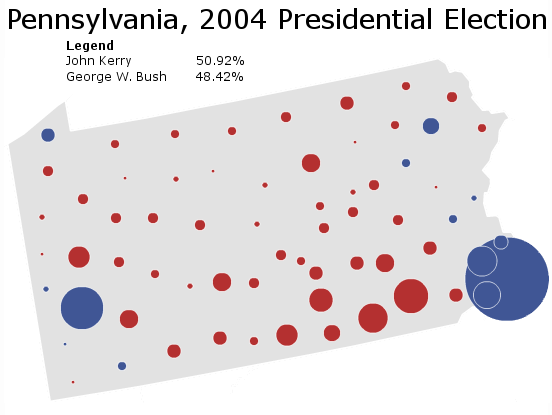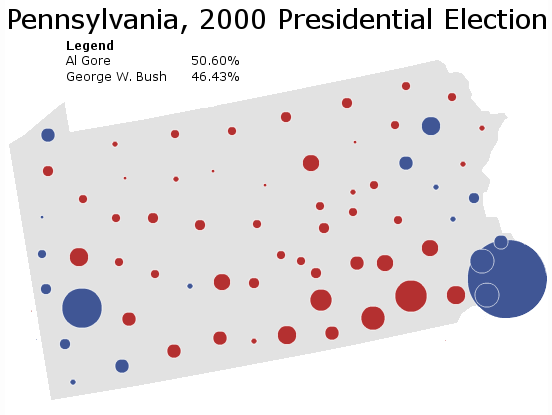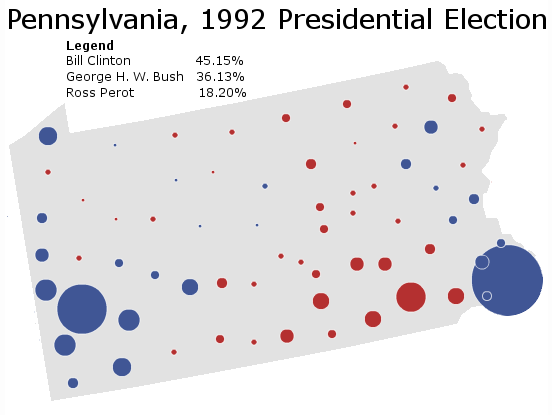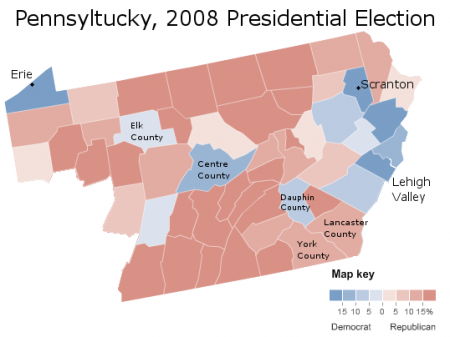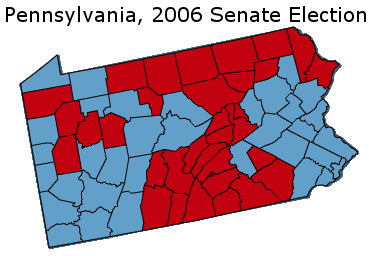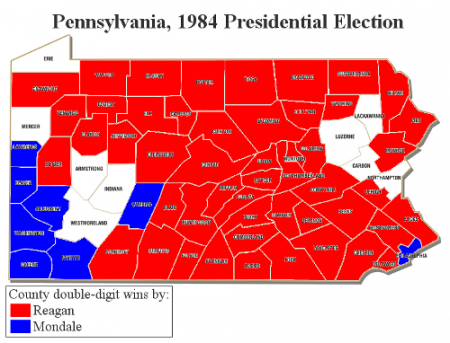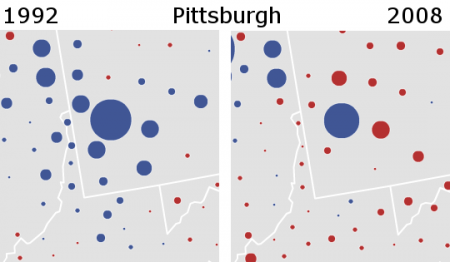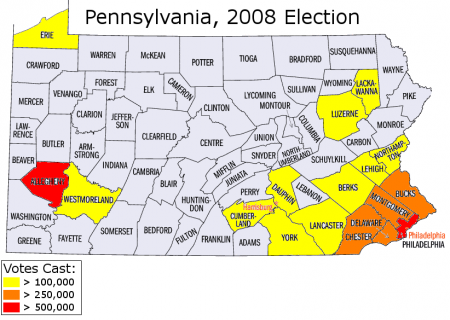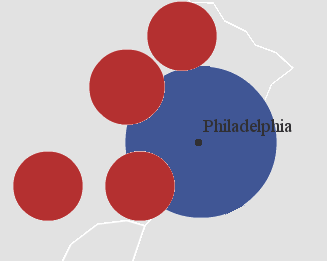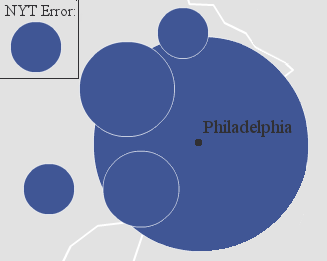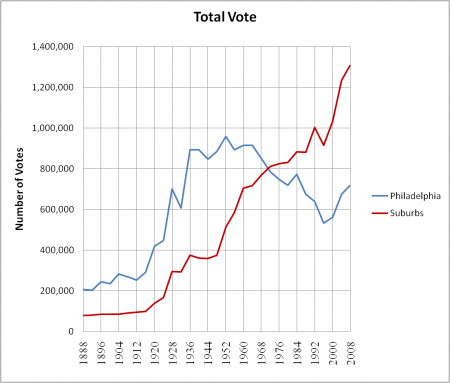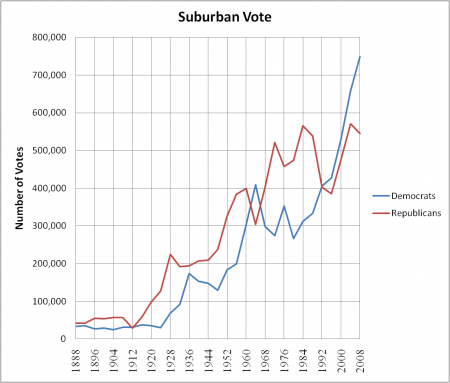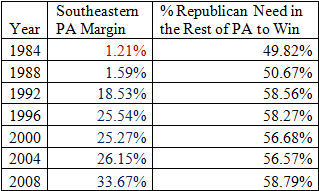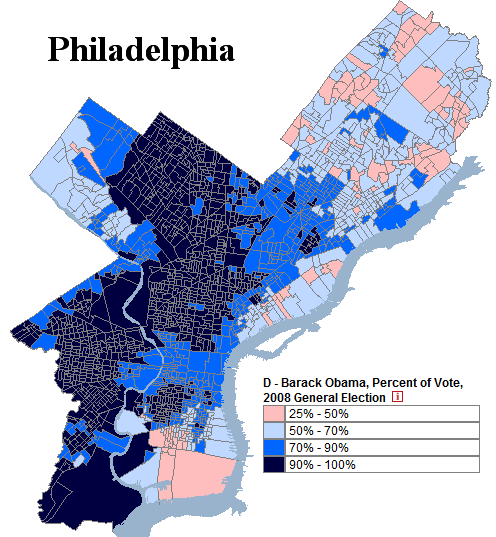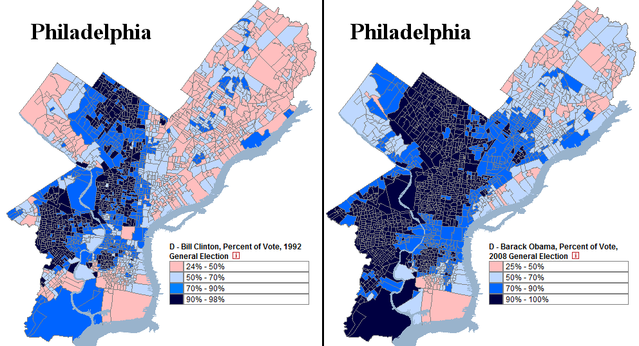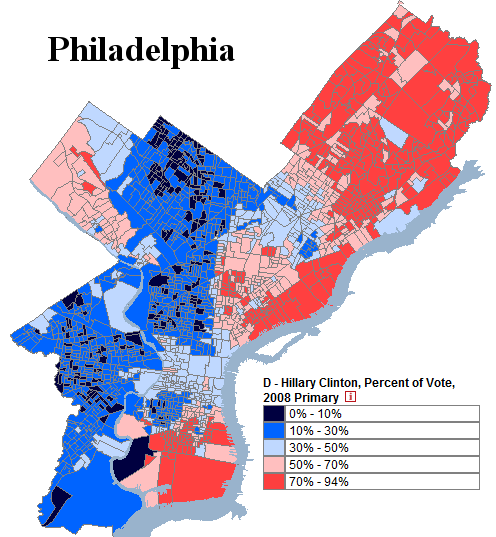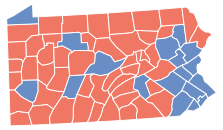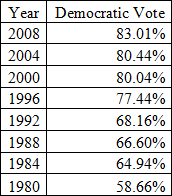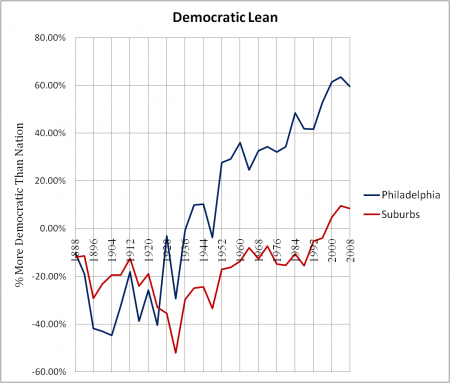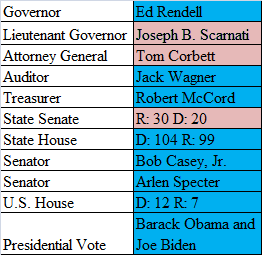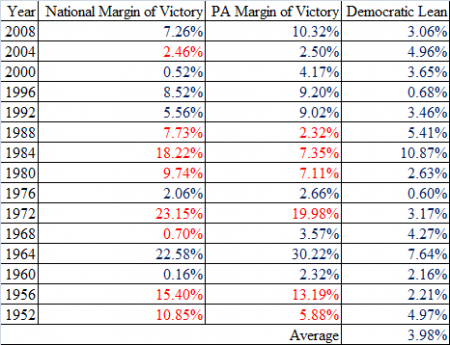By: Inoljt, http://mypolitikal.com/
A few maps of Pennsylvania’s presidential elections are posted below, for your enjoyment. Each map comes with some brief analysis. Note how in each succeeding election, Democratic margins in the Philadelphia metropolis increase, while their margins in the Pittsburgh corridor decrease.
(Note: Because the Times stopped updating before all absentee/provisional ballots were counted, this map does not fully reflect the actual results. I have corrected the discrepancy.)
As the national tide increasingly turns in Senator Barack Obama’s favor, Senator John McCain mounts a quixotic attempt to win Pennsylvania. While Mr. McCain improves in the southeastern rustbelt, Democratic dominance in eastern Pennsylvania ensures a double-digit blue margin.
More below.
President George W. Bush mounts a determined attack on Pennsylvania, coming within 2.5% of Senator John Kerry. Mr. Bush does quite well in the traditionally Democratic Pittsburgh corridor and Republican strongholds throughout the “T.” But double-digit losses in Philadelphia’s suburbs (and a 400,000 vote deficit coming out of the city itself) prevent Mr. Bush from victory.
______________________________________________________
Without President Bubba holding the line, Republican margins in Pennsyltucky are much higher. Nevertheless, Al Gore closely carries Pennsylvania based on Democratic strongholds in the Philadelphia and Pittsburgh metropolises.
_____________________________________________________
With incumbent Bill Clinton poised to win comfortably weeks before election day, Senator Bob Dole does not seriously contest Pennsylvania. Democrats improve in the east and weaken in the west, while Mr. Clinton sails to a comfortable victory.
______________________________________________________
Governor Bill Clinton romps to a nine-point margin, following three straight Republican victories in the state. Mr. Clinton milks Democratic strength in the industrial southwest for everything it’s worth, winning 2-1 margins in a number of counties. More ominously for Republicans, President George H. W. Bush barely loses the Philadelphia suburbs – the first Republican to do so since Senator Barry Goldwater (and before him President William Taft, in 1912).
(Note: Credit goes to the NYT for these amazing images.)
